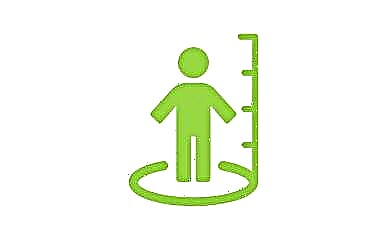
In preparation for IVF, a woman undergoes many examinations and passes a large number of tests. This is not a whim of medical institutions, but a real necessity: the doctor must be well aware of the difficulties he may encounter during artificial insemination of a particular patient. One of the most important and informative analyzes is hysteroscopy. What this survey is, how it is carried out and what it shows, we will tell in this material.
What it is?
Hysteroscopy of the uterus is a method of instrumental operational diagnostic examination. It is done in order to have a comprehensive idea of what is the state of the woman's uterus, her inner functional layer. This is very important for assessing the likelihood of a successful procedure. With a thinned endometrium, with an uneven and thin functional layer, the probability of implantation of implanted embryos, alas, is low.

Dhysteroscopy before IVF is done in order to know for sure whether a woman can become pregnant and bear a child. Also, this examination is considered mandatory after an unsuccessful IVF attempt. It will help establish the reasons why the pregnancy did not take place.
How is it done?
Hysteroscopy is performed using special equipment - a hysteroscope, which is a very thin and elegant probe with a built-in optical system. At the end of the probe there is a tiny video camera that will broadcast the image to the monitor. The probe is inserted into the uterine cavity through the cervical canal.

For diagnostic purposes, hysteroscopy is done with the thinnest probes, the diameter of which does not exceed 7 mm. This procedure is practically painless for the patient and in most cases does not require anesthesia. The examination, although not the most pleasant, is not painful and not long. The cervix is not dilated with it, if a woman has hypersensitivity, she can be given pain relief.
Wider hysteroscope probes are used in operative hysteroscopy, when it is necessary not only to conduct a visual examination of the endometrium and uterine walls, but also to take tissue samples for analysis by biopsy.

Sometimes it becomes necessary not only to make a biopsy, but also to carry out a hysteroscopy with curettage in order not only to assess the condition, but also to remove some nodes, adhesions, and neoplasms.
These types of hysteroscopy (with biopsy and separate diagnostic curettage - RFE) require cervical dilation and mandatory pain relief.
IVF terms
After hysteroscopy for diagnostic purposes, if no pathologies have been identified, IVF can be done after 15-30 days, that is, in the next menstrual cycle. If pathologies are identified, it takes time to carry out preliminary treatment, if doctors consider it appropriate.
After hysteroscopy with biopsy, IVF can be prescribed in about 2-3 months, and after the procedure with curettage, IVF is planned no earlier than six months later. In each case, the doctor prescribes the timing of the in vitro fertilization protocol after hysteroscopy, taking into account individual risks and examination results.

Indications
Hysteroscopy is a great help for fertility doctors. We can safely say that it increases the chances of successful IVF, as it allows the doctor to know all the "weak" points of the female body. An examination is not always prescribed, but only for certain indications, including:
- infertility caused by the habitual miscarriage of the fetus (several miscarriages or missed pregnancies in history);
- infertility caused by endometriosis;
- infertility due to a history of several abortions;
- if the doctor suspects polyps, adhesions, damage to the mucous membranes after surgery;
- infertility against the background of uterine fibroids;
- idiopathic infertility, the cause of which has not been established;
- infertility associated with irregularities in the regular menstrual cycle.

Hysteroscopy is mandatory after several unsuccessful IVF attempts. The effectiveness of hysteroscopy is considered very high, the examination is classified as high-precision.
Contraindications
They try not to carry out hysteroscopy if a woman has malignant tumors in the uterus or severe stenosis of the cervical canal.

The diagnostic procedure is not performed for women who fell ill at the time of the examination with influenza, SARS or any other disease - it takes time to recover, after that the temporary ban will be lifted and the woman will be able to undergo an examination.
Certain vascular and heart diseases, as well as uterine bleeding at the time of hysteroscopy, are considered contraindications to the procedure. A relative contraindication is the absence of pregnancy and childbirth in the history.
Some doctors try not to refer women who will have their first pregnancy for hysteroscopy.

Preparation for the procedure before IVF
Before hysteroscopy, a woman must definitely pass all the tests prescribed by the doctor. Usually, general blood and urine tests, a biochemical blood test, and a vaginal smear for microflora and infections are prescribed. With positive results of laboratory diagnostics, a woman is sent for an ultrasound of the pelvic organs. And only then can she undergo hysteroscopy of the uterus.
Before IVF, hysteroscopy is prescribed in the interval from 6 to 10 days of the menstrual cycle, the report is carried out from the first day of the last menstruation. There is no need to go to the hospital for an examination. If hysteroscopy is performed only as a diagnosis and is not accompanied by a biopsy or curettage, then a woman will stay in the clinic for no more than three hours. The procedure itself takes about 10-15 minutes.

After curettage, the hospital stay can last up to a day or a little more if any complications develop. The procedure in this case can take up to an hour. By the way, the likelihood of complications after the procedure is not so high - no more than 1%.
Before hysteroscopy for 12 hours, a woman is advised to refrain from eating. On the day of the procedure, you should do an enema, empty the intestines, and empty the bladder half an hour before the procedure. Taking aspirin and any drugs based on acetylsalicylic acid is prohibited at least a week before hysteroscopy to avoid bleeding.
If a woman has taken anticonvulsants or pain relievers, be sure to inform the doctor about this before hysteroscopy. Sex is not recommended 3-5 days before the procedure.

If the examination was not scheduled
As already mentioned, not all women who have IVF are recommended by the doctor hysteroscopy. The modern approach of the World Health Organization to this issue is somewhat different - this organization strongly recommends hysteroscopy for everyone who goes to IVF. Firstly, it will improve the protocol, since the background information from the fertility doctor will be more. Secondly, it will save patients time and money. After an unsuccessful attempt, hysteroscopy will still have to be done, and it is better to do it before the first attempt in order to increase the chances of pregnancy.
If your doctor has not ordered a hysteroscopy, you can contact him with this question and ask him to add the examination to the appointment before IVF. This is a woman's right.

The cost
Hysteroscopy, as prescribed by a doctor, is completely free. It is carried out in most public hospitals and clinics, as well as on the basis of antenatal clinics. However, be prepared for the fact that the queue for the procedure will be impressive.
If you need to make the examination faster, you should contact a private clinic that provides such services. The cost can be different - from the basic 4-7 thousand for a diagnostic procedure to 30 thousand rubles for hysteroscopy with RFE and subsequent histological analysis of tissues from the uterine cavity. The best option for a woman planning IVF is to have a hysteroscopy with the doctor who will plan the IVF protocol.

Reviews
The most positive feedback from women about office hysteroscopy, which for diagnostic purposes can be done directly in the office of an obstetrician-gynecologist on a gynecological cross. It's fast, not painful and quite informative.

According to women who have gone through this procedure, scraping hysteroscopy significantly increases the chances of pregnancy. Most women, after an unsuccessful attempt and subsequent procedure, manage to become pregnant in the second or third protocol.
For information on the features of hysteroscopy before IVF, see the next video.



